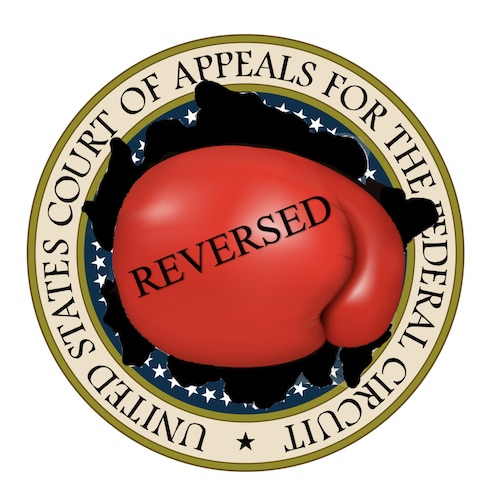Victory for Virtek Patent as CAFC Schools PTAB on Proper Motivation to Combine Analysis
“This case involves nothing other than an assertion that because two coordinate systems were disclosed in a prior art reference and were therefore ‘known,’ that satisfies the motivation to combine analysis. That is an error as a matter of law. It does not suffice to simply be known. A reason for combining must exist.” – CAFC opinion
In a precedential decision authored by Chief Judge Moore, the U.S. Court of Appeals for the Federal Circuit (CAFC) on Wednesday partially reversed a Patent Trial and Appeal Board (PTAB) ruling that certain claims of Virtek Vision International’s patent on a method for aligning a laser projector were unpatentable, finding the Board erred as a matter of law in its analysis. The court also affirmed the PTAB’s finding that other claims were not proven unpatentable.
Aligned Vision challenged various claims of Virtek’s U.S. Patent No. 10,052,734, which is titled “Laser Projector with Flash Alignment,” via inter partes review (IPR), arguing claims 1, 2, 5, 7, and 10–13 would have been obvious over prior art references titled Keitler and Briggs (Ground 1), and over Briggs and another reference, Bridges (Ground 3). It also argued claims 3–6 and 8–12 would have been obvious over Keitler, Briggs, and ‘094 Rueb (Ground 2), and over Briggs, Bridges, and ‘094 Rueb (Ground 4).
On appeal, Virtek argued that the Board’s findings were not supported by substantial evidence because Aligned Vision relied solely on Briggs’ mention of “determining the 3D coordinates of targets” to show Virtek’s claim to “identifying a pattern of the reflective targets on the work surface in a three dimensional coordinate system” would have been obvious to a skilled artisan. “Neither Keitler (Ground 1) nor Bridges (Ground 3) discloses identifying targets in a 3D coordinate system as claimed,” wrote the CAFC. “Instead, both references disclose determining an angular direction of each target.” The court thus found the Board “erred as a matter of law in concluding that a skilled artisan would have been motivated to use the 3D coordinate system disclosed in Briggs instead of the angular direction systems in Keitler or Bridges” because recognizing that two alternative arrangements were known in the art isn’t sufficient to meet the motivation to combine requirement. The court continued:
“The mere fact that these possible arrangements existed in the prior art does not provide a reason that a skilled artisan would have substituted the one-camera angular direction system in Keitler and Bridges with the two-camera 3D coordinate system disclosed in Briggs.”
The CAFC turned to KSR Int’l Co. v. Teleflex Inc., 550 U.S. 398, 421 (2007) for an understanding of when limitations from different references can be combined to reach a conclusion of obviousness. Under KSR, “[w]hen there is a design need or market pressure to solve a problem and there are a finite number of identified, predictable solutions, a person of ordinary skill has good reason to pursue the known options within his or her technical grasp.” But KSR did not eliminate the need for a motivation to combine prior art references to exist, said the court:
“Here, there was no argument about common sense in the petition or in [Aligned Vision’s expert] Dr. Mohazzab’s declaration…. There was no evidence that there are a finite number of identified, predictable solutions. There is no evidence of a design need or market pressure. In short, this case involves nothing other than an assertion that because two coordinate systems were disclosed in a prior art reference and were therefore “known,” that satisfies the motivation to combine analysis. That is an error as a matter of law. It does not suffice to simply be known. A reason for combining must exist.”
Thus, the court found substantial evidence did not exist for the Board’s holding and reversed the decision as to claims 1, 2, 5, 7, and 10–13.
As to Aligned Vision’s cross-appeal, the court held that the argument presented in support of a motivation to combine for the claims that were upheld was “conclusory” statements made by Aligned Vision’s expert and found that the Board’s analysis upholding these claims was supported by substantial evidence.
Image Source: Deposit Photos
Image ID: 10042948
Author almoond
Eileen McDermott
Eileen McDermott is the Editor-in-Chief of IPWatchdog.com. Eileen is a veteran IP and legal journalist, and no stranger to the intellectual property world, having held editorial and managerial positions at […see more]







